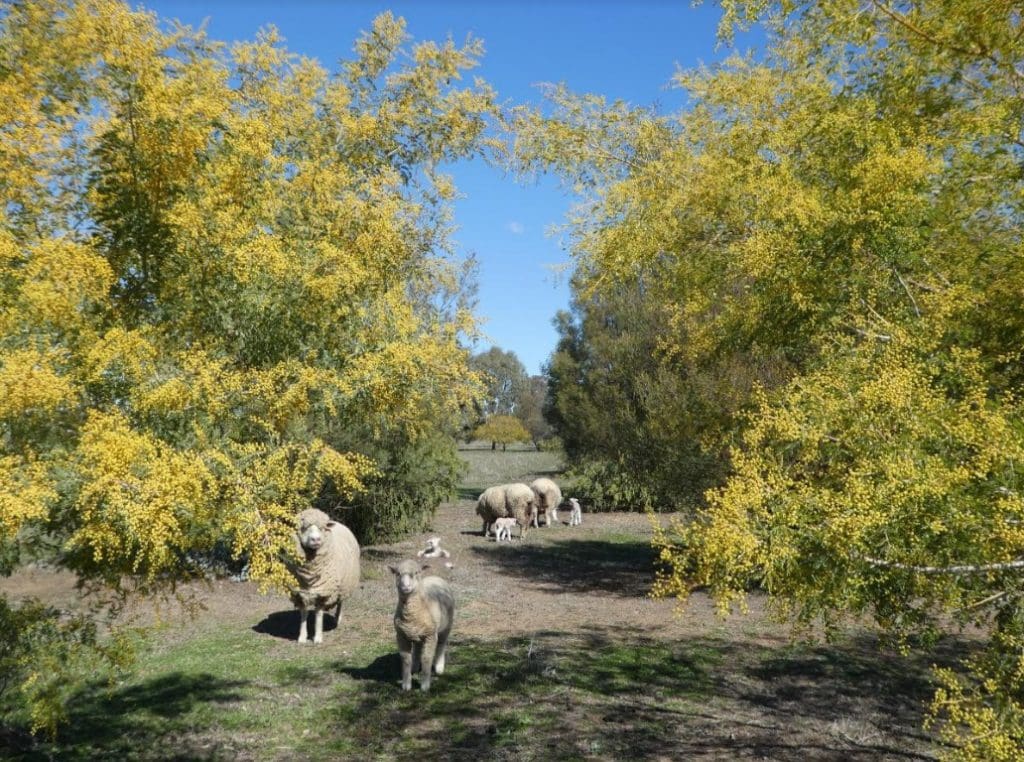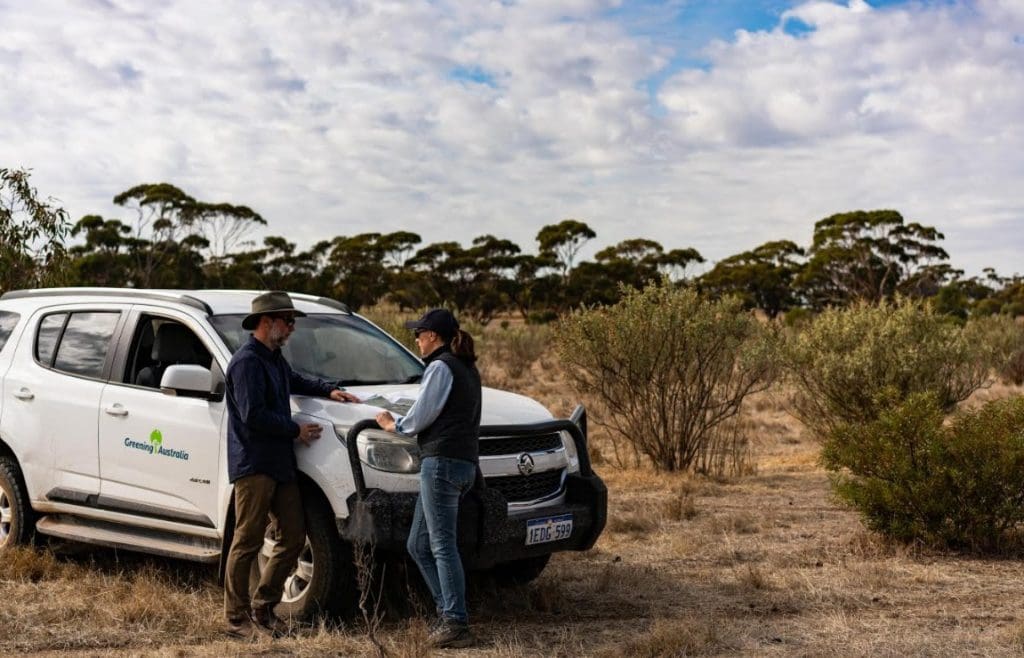
Ewes lambing among wattles near Grenfell, NSW. Image – Mikla Lewis.
AUSTRALIAN sheep producers can help researchers put a property value on the lamb survival benefits of native vegetation through a nationwide survey.
The survey administered by Greening Australia and National Australia Bank is seeking to quantify the link between investing in ‘natural capital’ and farm productivity and profitability.
Greening Australia said it is accepted that establishing dense shelter belts of vegetation on farms can improve newborn lamb survival by protecting them from extremes in temperature, wind chill and rainfall.
And while anecdotal and scientific evidence shows that integrating native vegetation into farming systems can mitigate risk, enhance productivity, and provide an array of ecosystem services, these proven benefits are rarely translated into demonstrable economic value.
As a result, Greening Australia said property valuers and banks still tend to consider native vegetation and other natural features on farms as having ‘zero productive value’.
Native vegetation shelter benefits apply nationally

Greening Australia’s Dr Blair Parsons, left, talks with a Western Australian farmer about integrating native vegetation into farming systems.
Greening Australia’s science and planning manager, Dr Blair Parsons, the benefits of native vegetation shelter apply nationally, although there were also fodder benefits from some species in some systems.
“Obviously there are so many other things you could have a crack at, but this is one first little step along the way to try to genuinely value the environment or value that natural capital that people can have at their disposal.”
At the recent Regenerative Agriculture Conference in Western Australia, 78 percent of attendees identified hard proof of return on investment and investment readiness as key barriers to private investment and lending in regenerative agriculture.
“Given the key role regenerative agriculture can play in simultaneously tackling the climate crisis and land degradation, these barriers desperately need to be hurdled,” said Greening Australia’s Science and Planning Manager, Dr Blair Parsons.
“It is vital to understand where producers can improve the profitability and productivity of their businesses by investing in natural capital.
“Ultimately the results of the project should help improve decision making about integrating native vegetation into farming enterprises for all involved: landholders, financial institutions and land management planners,” he said.
He said putting a dollar figure on the value of native vegetation for farming systems could also stimulate further investment in the environment and agriculture sectors.
“It’s all about, if you were to look at a farm that had remnant bush on it, this doesn’t factor into anyone’s valuation at all.
“Environment and biodiversity – these services that the vegetation provides are treated as sort of free,” Dr Parsons said.
“The important part of this and the reason we are partnering with a bank on it is that they want to understand how natural capital could come into their thinking about risk.
“So if you have two farms that are essentially identical, but one has no vegetation and another has a good sound base level of vegetation there, it’s effectively a sort of ecological framework that can give them a bit more resilience through those harder times,” he said.
“So it would makes sense that that is a less risky farm to work with and if you are a bank and you scale it up into the thousands (of properties) you will have a competitive advantage if you’ve got farms with a good shelterbelt system and good native veg to use as part of your enterprise.”
It is part of a broader research project by Greening Australia that aims to develop credible metrics and standards around the financial benefits of native vegetation to landholders, by collecting and analysing data linking natural capital investments and financial performance on-farm.
The deadline for survey responses is 31 October 2019. The survey is available here.
For more information about the project click here.

HAVE YOUR SAY